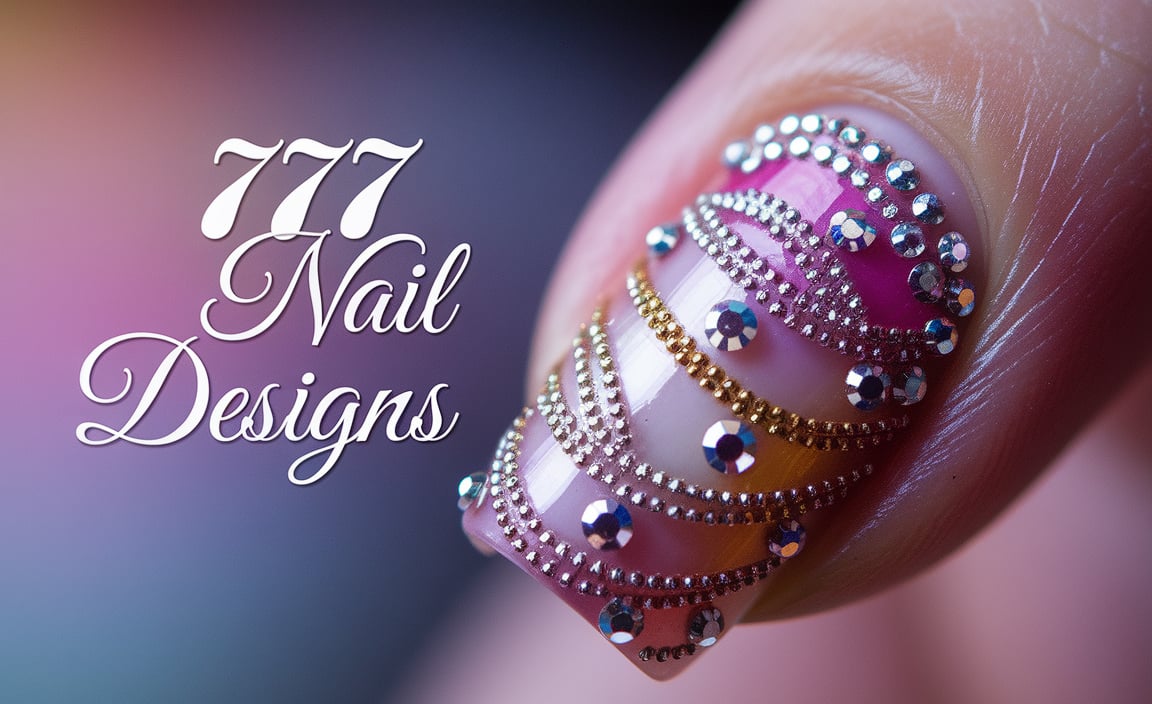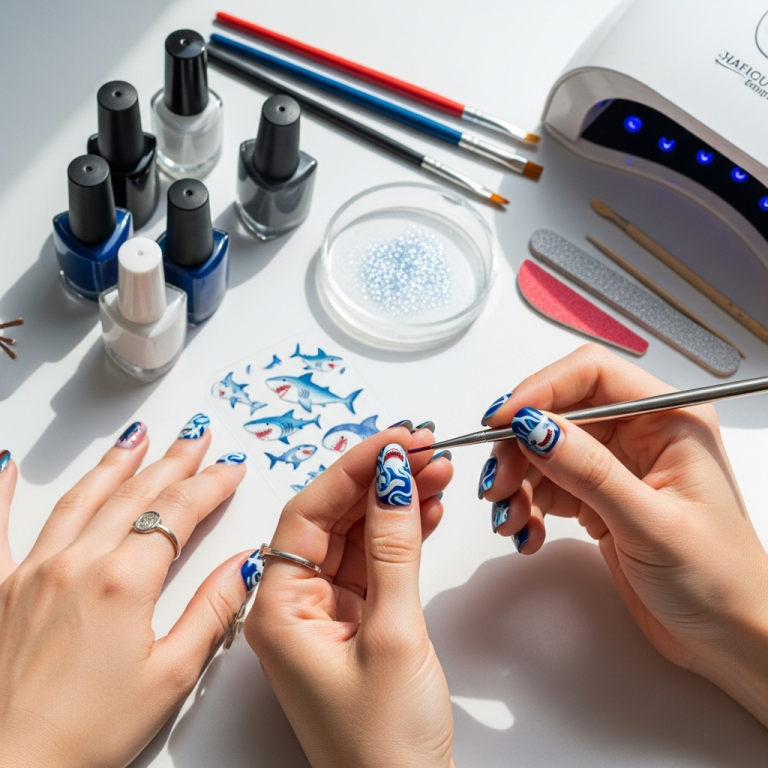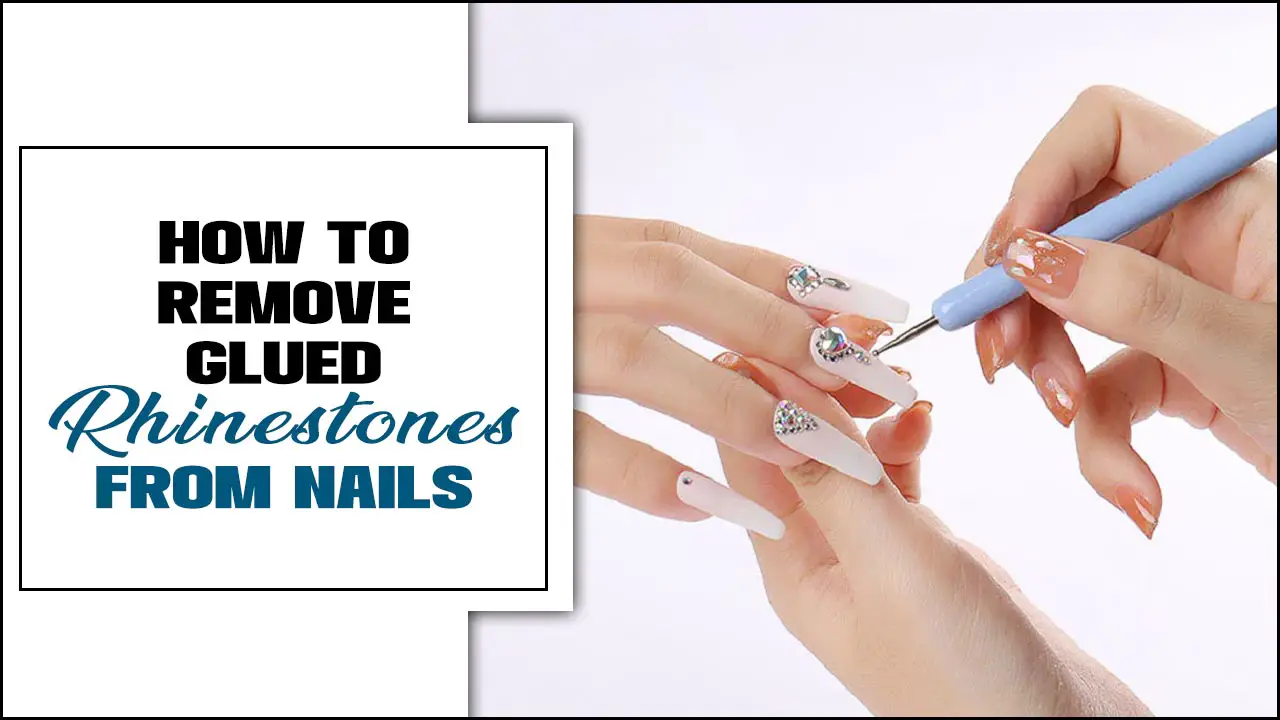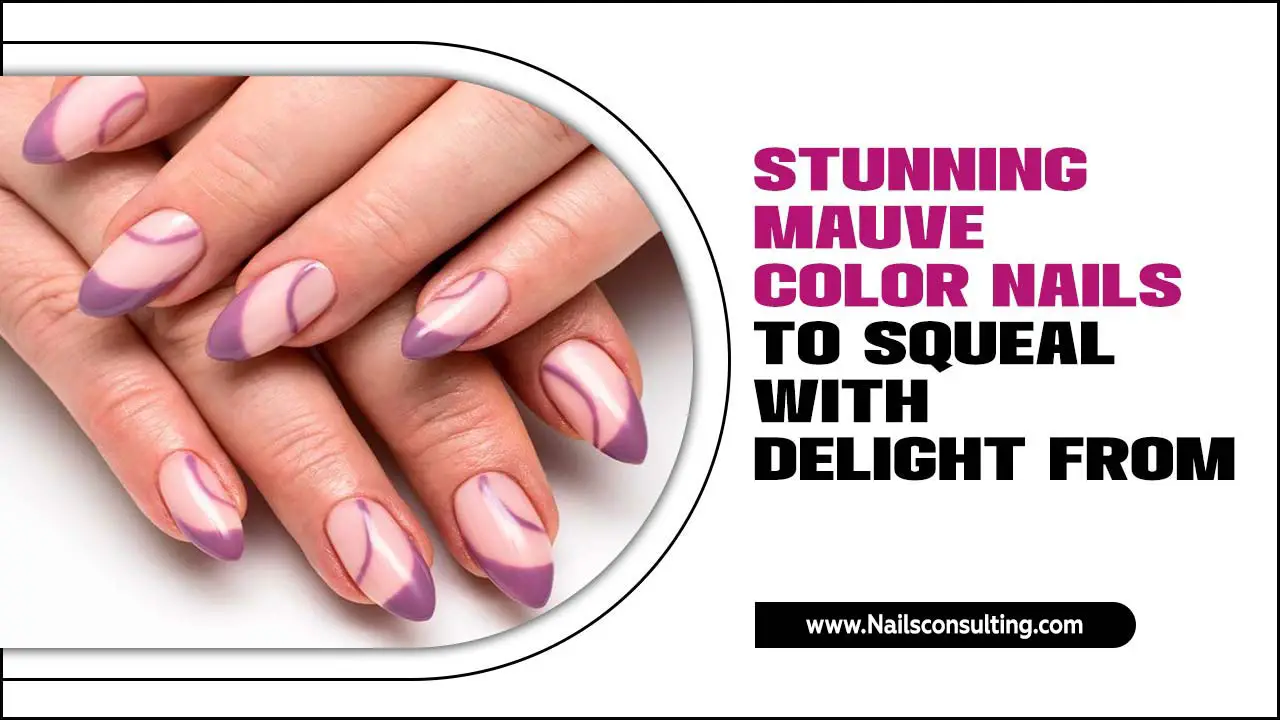Get a flawless French manicure at home! This genius step-by-step guide makes achieving those iconic white tips and natural-looking nails super easy, even for beginners. Follow these simple instructions for salon-worthy results you can do yourself.
Who doesn’t love a classic French manicure? It’s timeless, chic, and goes with absolutely everything. But let’s be honest, getting that perfect crisp white tip can feel a little… daunting. We’ve all been there, staring at our nails, wondering if we can really pull off that clean line without looking like we tried a bit too hard (or not hard enough!). It’s easy to get frustrated when the lines are wobbly or one nail looks totally different from the rest. But guess what? Achieving that elegant look at home is totally doable, and I’m here to show you exactly how. Get ready to give your nails that polished, sophisticated glow with my easy-to-follow, step-by-step guide. Let’s get those tips looking fabulous!
Your Essential French Manicure Toolkit
Before we dive into the magic, let’s make sure you have everything you need. Having the right tools makes all the difference, turning a potential mess into a masterpiece. Think of these as your trusty sidekicks for achieving French manicure perfection. Don’t worry if you don’t have everything; we’ll cover some easy swaps too!
Must-Have Nail Essentials:
- Base Coat: This is your nail’s best friend. It protects your natural nail from staining and helps polish adhere better.
- Sheer Pink or Nude Polish: This forms the natural-looking base of your manicure.
- White Nail Polish: This is for those iconic tips! A good opaque white is key.
- Top Coat: Seals everything in and adds loads of shine.
- Nail Polish Remover: For those little oops moments (we all have them!).
- Cotton Pads or Balls: For precise cleanup.
- Manicure Sticks or Cuticle Pusher: To tidy up the nail bed and cuticle area.
- Nail File: To shape your nails perfectly.
- Buffer: For a smooth nail surface.
- Optional: French Manicure Guide Strips or Stencils: These adhesive guides can be a lifesaver for beginners trying to get a straight line.
- Optional: Small Angled Brush or Liner Brush: For cleaning up tricky edges or freehanding tips if you’re feeling brave!
Prep School: Setting the Stage for Success
A gorgeous manicure starts with beautifully prepped nails. Skipping this step is like trying to paint a wall without cleaning it first – you won’t get the best finish. Taking a few minutes to prepare your nails will make the polishing process smoother and ensure your French manicure looks its absolute best and lasts longer.
Step 1: Clean Slate
Start by removing any old nail polish. Even if you think your nails are bare, a quick swipe with nail polish remover ensures you’re working with a perfectly clean surface. This prevents mixing old polish colors with your new shades.
Step 2: Shape Up
Now it’s time to shape! Using your nail file, gently file your nails into your desired shape. Whether you prefer a classic square, a soft squoval, or an elegant oval, aim for consistency across all nails. Always file in one direction to prevent snagging and splitting. For a traditional French look, slightly longer nails with a rounded or square-rounded tip tend to work best.
Step 3: Buff It Out
Gently buff the surface of your nails with a buffer. This smooths out any ridges and creates a slightly rough texture that helps your polish grip better. Don’t over-buff, as this can weaken your nails. Just a few light passes are enough.
Step 4: Cuticle Care (Optional but Recommended!)
Push back your cuticles gently using a manicure stick or cuticle pusher. This creates a clean line around your nail bed and prevents polish from pooling in the cuticle area, giving your manicure a more professional finish. If you have dry cuticles, a little cuticle oil at this stage can work wonders and look amazing.
Step 5: Clean and Dry
Wipe your nails with nail polish remover one last time. This gets rid of any dust or oils from filing and buffing. Ensure your nails are completely dry before moving on to the next steps. Any moisture can cause your polish to bubble or peel.
The Application: Bringing Your French Manicure to Life
This is where the magic happens! We’ll go layer by layer to build that chic French manicure look. Remember, patience is your best friend here. Doing one nail at a time, and letting each coat dry properly, will lead to the best results.
Step 6: Base Coat Brilliance
Apply a thin, even layer of your base coat. This protects your nail and provides a smooth canvas for your polish. Let it dry completely. You can usually tell it’s dry when it’s no longer tacky to the touch.
Step 7: The Natural Hue
Apply one or two thin coats of your sheer pink or nude nail polish. This creates the natural-looking base of your French manicure. Let each coat dry thoroughly before applying the next. Again, patience! Rushing this step can lead to smudges.
Step 8: Crafting the Perfect White Tip
This is the most crucial part! There are a few ways to achieve those signature white tips:
Method A: Using Guide Strips (Beginner-Friendly!)
- Once your pink/nude layer is completely dry, carefully apply the French manicure guide strips. Place them where you want the white tip to begin. Press down firmly to ensure a good seal so no polish seeps underneath.
- Dip the brush in your white nail polish and wipe off excess on the bottle neck.
- Gently paint the tip of your nail above the guide strip. For a crisper line, try using a dabbing motion or holding the brush at a slight angle.
- Allow the white polish to dry for at least a minute or two. Test a tiny corner of the strip to see if it’s dry enough to remove without smudging.
- Carefully peel off the guide strips while the white polish is still slightly wet but not smearing. If you wait too long, it can pull the polish off with it.
- If any polish bled under the line, use a cleanup brush dipped in nail polish remover to carefully erase the mistake.
Method B: Freehanding with a Brush (For the Confident!)
- Once your pink/nude layer is completely dry, grab your white polish.
- Dip your brush into the white polish and wipe off excess. You want just enough for a clean line.
- Starting from one side of the nail, gently draw a curved line across the tip. Aim for a smile line that follows the natural curve of your nail.
- Connect the line back down the other side.
- For a more opaque finish or to refine the line, wait for the first layer of white to dry and apply a second thin coat.
- Use a fine-tipped brush dipped in nail polish remover to clean up any messy edges.
Method C: Using a Silicone Stamper or Small Brush (Clever Hack!)
- Apply your base color and let it dry.
- Apply a line of white polish onto a flat surface (like a piece of paper, a silicone mat, or even a stamper head).
- Dip the very tip of your nail into the white polish on the flat surface, or use a small angled brush to carefully paint the tip.
- Let it dry completely.
Here’s a handy table to visualize the core application steps:
| Step | Action | Key Goal |
|---|---|---|
| 6 | Apply Base Coat | Nail protection & polish adhesion |
| 7 | Apply Pink/Nude Polish (1-2 coats) | Natural-looking nail bed |
| 8 | Apply White Tip Polish | Crisp, clean smile line |
| 9 | Apply Top Coat | Shine, protection & longevity |
Step 9: Top It Off!
Once the white tips are completely dry, apply a generous layer of your top coat. Make sure to cap the free edge of your nail by running the brush along the tip. This seals in your design, prevents chipping, and adds that beautiful, glossy finish. Let your nails dry completely – this is key to avoiding smudges!
Maintaining Your Masterpiece
You’ve done it! You have a gorgeous French manicure. Now, let’s keep it looking fabulous for as long as possible. A little bit of care can go a long way in preserving that salon-fresh look.
- Avoid Harsh Chemicals: Wear gloves when doing chores or washing dishes. Detergents and hot water can strip polish and dry out your nails.
- Moisturize: Keep your hands and cuticles hydrated with a good hand cream and cuticle oil. Healthy nails and skin look better with any polish on them.
- Touch-Ups: If you notice a tiny chip on the white tip, you can try to carefully touch it up with a bit of white polish and a fine brush or even a dotting tool.
- Reapply Top Coat: Every two to three days, apply another layer of top coat to refresh the shine and add extra protection.
For those interested in the science behind nail polish longevity, the National Institute of Standards and Technology (NIST) offers insights into testing and understanding coatings, which gives a great perspective on why proper application and sealing are so important for durability!
Tips & Tricks for French Manicure Flawlessness
Let’s face it, sometimes we need a little extra help. Here are some of my favorite tips to make your French manicure even better. These are the little secrets that can elevate your DIY game from good to absolutely stunning.
- The “U” Shape Technique: If you’re freehanding, try creating a shallow “U” shape first at the tip, then fill it in. This can help you achieve a smoother smile line.
- Clean Up Crew: A small, stiff brush (like an old eyeliner brush or a specialized cleanup brush) dipped in nail polish remover is your best friend for cleaning up any smudges or wavering lines. Draw from the polish away from your nail to clean.
- Two Whites Are Better Than One: For an extra crisp white tip, consider using a thin layer of opaque white polish, letting it dry, and then layering a holographic or shimmery white over it for dimension.
- Speed Drying: If you’re in a hurry, quick-dry drops or sprays can help significantly reduce drying time. Just be sure your polish is mostly set before applying them.
- Perfect Nail Health: Remember that healthy nails are the best canvas. Regular care, like using a good cuticle oil and avoiding harsh chemicals, will make any manicure look better on you. You can learn more about general nail health from resources like the Mayo Clinic’s guide on nail health.
- Practice Makes Perfect: Don’t get discouraged if your first attempt isn’t absolutely perfect. The more you practice, the steadier your hand will become, and the easier freehanding will get.
Common French Manicure Mistakes (And How to Fix Them!)
Even with the best intentions, we can stumble. Here are some common pitfalls and how to rescue your manicure:
Mistake 1: Wobbly White Lines
- Fix: This is where guide strips are your saviors! If you’re freehanding, a cleanup brush dipped in remover is essential. Gently draw the mistake away from your nail. For very shaky lines, you can try painting a slightly thicker white tip to hide imperfections underneath.
Mistake 2: Polish Bleeding Under Guide Strips
- Fix: Ensure the guide strip is pressed down VERY firmly before painting. If it happens despite your best efforts, try to gently lift any bled polish with a clean manicure stick while the polish is still wet, or use your cleanup brush.
Mistake 3: Thick, Chunky Tips
- Fix: Use fewer coats of white polish, and make sure each coat is thin. Wiping excess polish off the brush on the bottle neck is crucial. Aim for a delicate line rather than a thick band.
Mistake 4: Smudged Polish
- Fix: This usually happens when you rush. If it’s a big smudge, you might need to remove and start that nail over. For a tiny smudge, you can try to carefully pat it back into place with a clean finger or a dotting tool, and then apply a fresh layer of top coat once dry.
Mistake 5: Dull Finish
- Fix: This is almost always a top coat issue. Ensure you applied a good, glossy top coat. If the shine has worn off, a quick reapplication of top coat can revive it!
Let’s break down some potential solutions in a table:
| Problem | Solution |
|---|---|
| Wobbly White Lines | Use guide strips or a cleanup brush with remover. |
| Bleeding Under Guides | Press guides firmly; clean up with stick/brush. |
| Thick, Chunky Tips | Use thin, precise coats; wipe brush well. |
| Smudged Polish | Allow ample drying time; touch up carefully. |
| Dull Finish | Apply generous, glossy top coat regularly. |
Frequently Asked Questions About French Manicures
Q1: How long does a DIY French manicure usually take?
A1: With prep, application, and drying time, you can expect a French manicure to take anywhere from 30 minutes to an hour. The key is to let each layer dry properly, which adds to the total time but ensures a flawless finish.
Q2: What’s the best way to get a straight white line for French tips?
A2: For beginners, the easiest way is to use French manicure guide strips. They act as stencils to give you a crisp, clean line. If you’re feeling adventurous, practice freehanding with a steady hand and a cleanup brush for any mistakes.
Q3: Can I do a French manicure on short nails?
A3: Absolutely! French manicures can look elegant on short nails too. You’ll just need to create a thinner white tip to complement the nail length. Focus on a clean, precise line.
Q4: My white tips look streaky. What can I do?
A4: This often happens with less opaque white polishes. Make sure you’re using a good quality, opaque white polish. Apply two thin coats of white polish rather than one thick one, allowing each to dry slightly in between. Stirring or rolling the white polish bottle before use (don’t shake!) can also help distribute pigment evenly.
Q5: How can I make my French manicure last longer?
A5: Proper preparation is key! Ensure your nails are clean and free of oils. Apply a good base coat and a solid top coat, making sure to cap the free edge of your nail. Reapplying top coat every 2-3 days can also significantly extend its life and keep the shine fresh.
Q6: What are the best polish colors for a French manicure?
A6: The classic French manicure uses a sheer pink or nude for the base and bright white for the tips. However, you can get creative! Try a milky white, a soft beige, or even a very pale pink for the base, and experiment with pearly whites or off-whites for the tips. You can also do a “reverse French” by coloring the base lunula, or a “colored French” with a vibrant tip color.
Conclusion
There you have it! Crafting a beautiful French manicure at home is absolutely within your reach. By following these detailed steps – from meticulous preparation to the careful application of each layer – you




